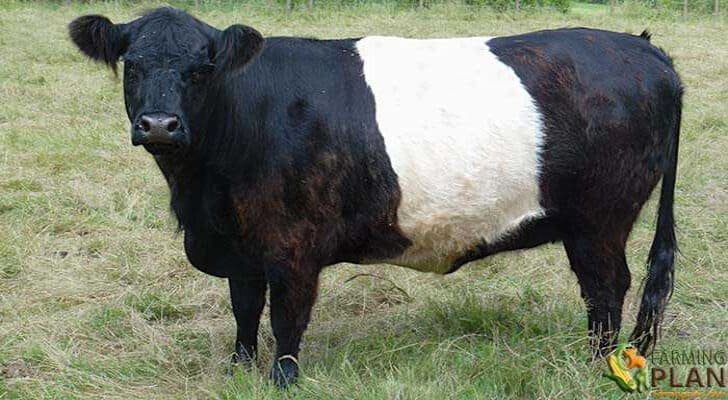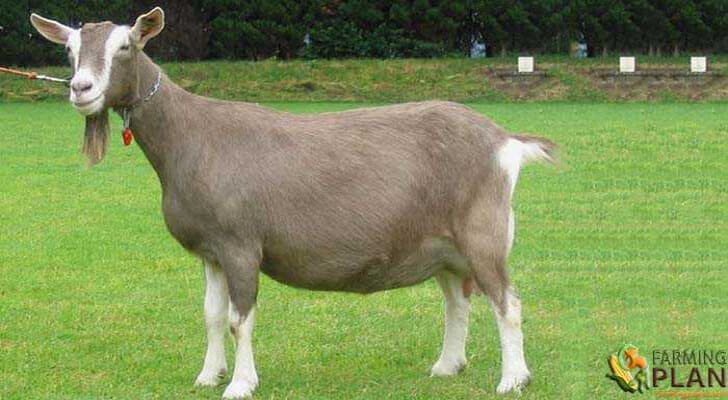Galloway cattle is a bovine breed that has been exploited for centuries as a meat producer in the southwest of Scotland. The origin of this race is from an area called Galloway, from which comes the name of this species. These animals have always been remarkable for the quality of their meat. In 1573 this race was described as tender, juicy meat with a good palate.
The Galloway race is old without doubt, but its origin is unknown. Due to its geographical location, the former breeders of these animals suffered little disturbance. The breeders devoted their time to obtaining useful animals from butchery.

Between the beginning of the 17th century and the end of the 18th century, 20.000 to 30.000 heads of cattle of this breed were sent every year to England for fattening. By 1811 the Galloway cattle had become the main breed of the county of Dumfries and south of Ayr.
Characteristics of Galloway Cattle
Galloway cattle have skin that is normally black but brownish or cervical layers are also found. The hair is soft and long, with a hairy sublayer; Some white hair on the udder is tolerating. Even in the best breeds, there are sometimes excellent quality cervical specimens.
The chestnut color is usually only a shade of the winter coat, while sometimes a red fox color is observed. The breed is mocha, but the forehead is less prominent than in the Aberdeen Angus cattle. The skin is dark, soft and moderately thick.
The head is short and wide, with wide nostrils. In addition, the body is compact, with well-arch ribs and a deep chest. Usually, the backs are well-formed, the back is straight. And the long hindquarters, moderately wide and well filled, reaching the musculature to the hocks.
Galloway cattle are smaller than Angus but more resistant and less demanding in terms of feeding and shelter. The average weight of adult cows is about 450 kg, but they are somewhat slow to mature and quite difficult to encircle.
On the other hand, exposure bulls can reach 600 kg at three years of age. The adult Galloway cattle reach the length of 4.5 meters for males and 4 feet for females. And they have an unusual tendency to transform feed into the meat from the most valuable parts. You may also like to read Charolais Cattle.
Animals fed in good conditions can compete perfectly with animals of other similar meat breeds and the quality of their meat is good. This race has the coat has two layers. The long-lasting outer layer provides protection against rain and wind.
The inner layer keeps the warmth of the cattle with the soft thick dense fur. While the desired coat is soft wavy and is not bristly. The weather-resistant layer provides protection against hard elements and eliminates the need for additional grease.
Food
Galloway cattle are a remarkable breed for their ability to turn mediocre mountain pastures into the meat. And at the same time, it can compete with other breeds when fed in more intensive conditions in the lowlands. It can consume fibrous grasses or of low value, which allows the mountain pastures to be used.
It is capable of spending the winter in the open air provided it has a minimum of shelter. And to receive hay or oat straw when there are no natural pastures. He grazes the most ordinary herbs and lives in lands where other races would barely survive. You may also like to read Limousin Cattle.
Usage
Galloway cattle are used entirely for the production of meat. In Scotland and north of England, Galloway cattle are becoming increasingly popular and are wide uses for crossings. The most common crossbreed is between Galloway cows and White Shorthorn bulls and the offspring are usually blue-color, call Blue-Greys.
Special Feature
Galloway cattle usually inhabit the southwest of Scotland. Including the jurisdictions of Dumfries, Kirkcudbright and Wigtown include the regions in which the Galloway cattle are mainly representing. These cattle live equally in the valleys that in the hills and is a rustic race. It is also found in the northern and eastern counties of England.
As the demand for milk increases, the Ayrshire breed has evicted the Galloway from the lower and more fertile areas. Forcing it to occupy other poorer hilly areas. The altitude reaches up to 600 m above sea level with few trees that offer shelter from the cold and winds.
The region of origin of Galloway cattle is wet, cold and windy with few trees that offer shelter. While these animals are distinguished by their superior birth and maternal ability. Initially, they were used for dairy products and meat, although now this breed is produced for its meat of excellent quality. Also, race is an example of resistance, management capacity, and longevity.
FAQ
What is Galloway cattle?
Galloway cattle are a breed of beef cattle originally from Scotland that have been bred since the 18th century. They are known for their hardiness and adaptability, especially to harsh climates, making them ideal for small farmers with limited resources. Galloway cattle are also admired for their distinctive coloring – most often black or “Belted” light-colored hair with a wide band of white around the midsection, but can also come in reds and duns.
Where do Galloway cattle come from?
Galloway cattle are a hardy, moderate-sized breed of beef cattle originally from the hills and valleys of Scotland’s southwest region. The breed was developed over hundreds of years in response to environmental pressures such as harsh winters and sparse pastureland.
How big do Galloway cattle get?
Galloway cattle, also known as “The World’s Finest Beef,” are a hardy and adaptable breed that originated in Scotland. These cattle are an all-purpose beef breed, known for their ability to produce high quality lean beef with superior carcass qualities while also thriving in any environment.
Conclusion
The Galloway is one of the world’s longest established breeds of beef cattle, named after the Galloway region in Scotland where it originated during the 16th century. This breed has become popular around the globe since being exported to Canada in 1853, the US in 1882 and Australia in 1951. A quick guide on how to raise a healthy cow! If you’re looking for more information about this subject or just want to learn more about raising livestock animals in general then be sure to check out our blog page dedicated entirely to that topic here. We hope this guide has helped you! Good luck with your new farm animal project.
As a reference: Wikipedia


